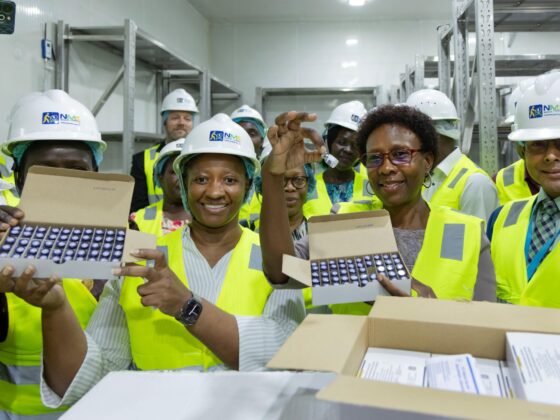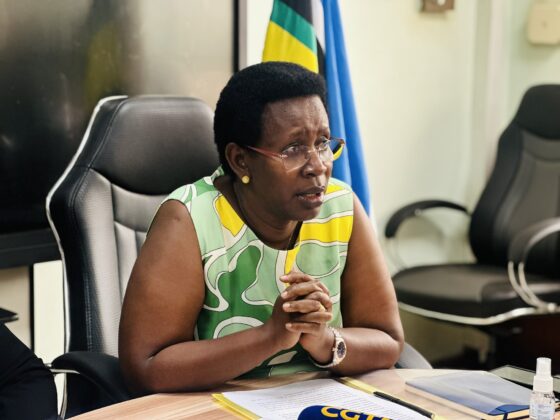Government, through Ministry of health, has embarked on infrastructure advancement, a move that the ministry Permanent Secretary Dr Diana Atwiine said is ‘Transformation geared towards attaining real value for money.’
Health infrastructure includes;
Buildings (civil works) – both medical & non-medical; Equipment – medical equipment, furniture and hospital plant; Communications (ICT equipment); Transport System: Ambulatory systems, cars, pickup trucks, vans, trucks, etc, as well as Medical Waste Management System and Sanitary Management.
All health Centre IIs will be converted to Health Centre IIIs. There will be no more building of Health Centre IIs
While making a January 27th 2020presentation at the ministry titledHealth Infrastructure In Perspectives, Dr George Otim, the acting Commissioner Health Infrastructure –Ministry of Health (MoH), revealed that;
While new facilities are being constructed and equipped during the implementation of the HSDP, priority has been given to Consolidation of existing facilities, in order to make them to function effectively and efficiently (e.g. staff housing, water and energy, theatres, equipment, medical stores etc) and the required ICT and related infrastructure.
Under Strategic priorities, Dr Otim said “Under different World Bank funded projects, 286 Health Centre IIs are currently being upgraded to health centre IIIs across the country and this is expected to reduce the walking distances to a radius of within 5km.” The upgrade is also in line to the NRM manifesto and MoH Health Sector Development Plan.
Mulago National referral Hospital has been upgraded to a National Super Specialised Hospital and is expected to carry out complex treatments including: organ transplants, cancer, infertility, heart and kidney treatments.
“Mulago Women Hospital is the cheapest in Kampala yet giving excellent services. Why would you pay Shs5 million for a normal caesarean section when you can get the same service at the Women Hospital at Shs1 million or Shs1.2 million,” Dr Atwiine said during the same event while encouraging Ugandans to make use of the new facility.
With harmonised professional incentives, it is expected this intervention will reduce haemorrhage of health workers out of the country and in the region.

Mulago Specialised Women and Neo natal hospital
Regional referral hospitals are also being re-equipped, strengthened and decongested through the improvement of health care services at General Hospitals and Health Centres.
Regional workshops have been equipped and are being strengthened to address breakdowns.
International Specialized Hospital of Uganda (ISHU)
In his presentation, Dr Otim said the Government of Uganda (GOU) approved the construction of the International Specialised hospital in Lubowa pursuant to a Project Works Investment Agreement (PWIA) signed in October 2015.
“Under the Project Services Agreement (December 2015), the contract is for the operation and maintenance of the hospital for a period of eight years. FINASI-SPV is responsible for the design, financing, construction, equipping, and the training of health workers.”
ISHU is a specialized referral, tertiary treatment, research, and teaching hospital, which is intended to treat patients who travel out of the country to and the region to seek specialized medical care.
In 2017, it was estimated that Ugandan patients spent an estimated US$186 million per year on medical treatment abroad and those who cannot afford end up losing their lives.
Construction Commenced on 10th June 2019 and is expected to complete on 9th June, 2021.
Improvement of the Kawolo and Busolwe General Hospitals
“The Government of the Republic of Uganda received funding of US$ 17,374,378.81 from the Kingdom of Spain under the Debt-Swap Program towards the Improvement of the Delivery of Health Care Services through improvement of the Kawolo and Busolwe General Hospitals,” Dr Otim said.
Kawolo Hospital has been equipped, refurbished and works completed whereas Busolwe General Hospital Detailed Designs are being prepared and works expected in FY 2020/2021
Last year, it is reported that Kawolo Hospital did not register any single maternal death,
Regional Hospital for Paediatric Surgery, Entebbe
In his presentation, Dr Otim said “Ministry of Health identified the field of Paediatric surgery as a priority to improve the level of Health care in the country and in the region, and it recognized EMERGENCY (NGO) as a reliable partner to develop high standard of surgical services and proper training of personnel.” The hospital facilities will include;
An emergency department – open 24 hours a day, 7 days a week, outpatients department (OPD) – screening, follow up and specialized consultations open from 8am to 4pm, 6 days a week, diagnostic tests department – open 24 hours a day, 7 days a week, blood bank, operating theatres and sterilization, Intensive Care Unit (ICU), ward, pharmacy, administration, technical department, ancillary and domestic services, (laundry, maintenance, etc.), and a guesthouse for regional patients and relatives.
Uganda Reproductive Maternal and Child Health Improvement Project
The Project Development Objectives (PDOs) are to: (a) improve utilization of essential health services with a focus on reproductive, maternal, newborn, child and adolescent health services in target districts; and (b) scale-up birth and death registration services.
Other Projects include;
Mulago specialized Women’s hospital, Development projects in RRHs, East African Public health Laboratory Network Project, Karamoja Infrastructure Improvement Development Project, Construction of Staff houses across the country and Supply of medical equipment to selected facilities e.g under UNOPS.









